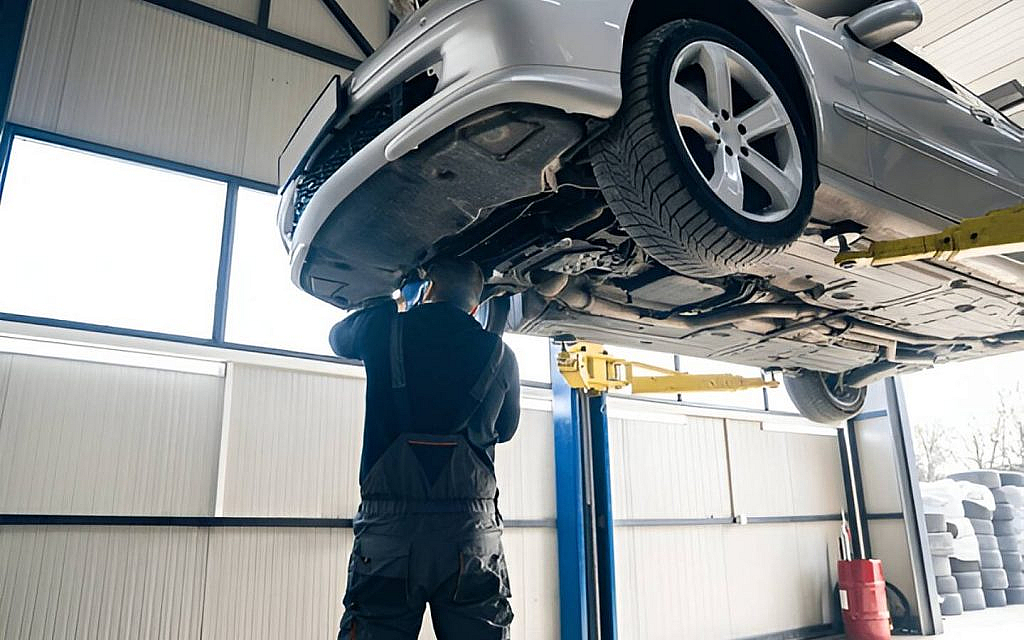Broken Coil Spring Symptoms
Coil springs play a crucial role in maintaining vehicle stability, absorbing road shocks and ensuring a consistent ride height. Like other components, coil springs can also experience wear and tear and may break under certain conditions. When the coil spring breaks, it can lead to a range of issues affecting comfort, handling and safety. Understanding the broken coil spring symptoms can help identify and fix issues before they become severe.
Understanding the Function of a Coil Spring
A coil spring is typically made of hardened steel and forms part of the car’s suspension system, positioned between the frame and the control arm. It is designed to compress and expand based on road conditions. It helps maintain ride height and absorbs the vibrations and shocks from uneven road surfaces.
Broken Coil Spring Symptoms
Some common car coil spring damage signs include the following:
Uneven Ride Height
One of the most noticeable suspension coil spring failure symptoms is a visible imbalance in the vehicle’s stance. When a spring fails, the affected corner of the vehicle tends to sag or sit lower than the others, indicating a loss of structural support. This is also among the common suspension problems people face.
Clunking or Popping Sounds

A broken coil spring may produce distinct noises, such as clunking or popping. This particularly happens when the vehicle passes over bumps, potholes or during turns. These sounds often result from the broken part of the spring shifting within the suspension assembly or making contact with nearby components.
Deteriorated Handling and Stability
One of the common broken coil spring symptoms includes reduced handling and stability. Steering response may feel less precise and body roll may increase, especially during cornering. These issues arise due to the loss of suspension balance and altered alignment.
Uneven or Premature Tyre Wear
Coil spring failure can cause improper wheel alignment, leading to uneven or accelerated tyre wear. This happens when the compromised suspension geometry results in inconsistent tyre contact with the road. Consequently, placing extra strain on certain tyre sections.
Visible Spring Damage
Bad coil spring symptoms also include visible damage. During routine maintenance or visual inspection, a break in the coil spring may be apparent. Often, the break occurs near the bottom or top coil. In some cases, a detached piece of the spring can be seen lodged in the strut or resting near the tyre.
Common Causes of Coil Spring Failure
The most common coil spring failure causes include:
Corrosion from Road Salt and Moisture
One of the leading causes of coil spring failure is corrosion. This particularly happens in regions with harsh winters where road salt is commonly used. Prolonged exposure to moisture and salt accelerates car body rust formation, weakening the spring over time until it eventually snaps under pressure.
General Wear and Fatigue
As with any component subjected to constant mechanical stress, coil springs are susceptible to wear and fatigue. Especially in older vehicles, repeated compression and decompression cycles gradually reduce the spring’s structural integrity, making it more prone to failure.
Impact from Poor Road Conditions

Driving over potholes, speed bumps or uneven road surfaces at high speed can exert intense, sudden forces on the suspension system. These repeated impacts can lead to stress fractures or sudden failure of coil springs, particularly if they are already weakened by corrosion or wear.
Overloading Beyond Manufacturer Specifications
Carrying loads that exceed the manufacturer’s specified weight limits can place excessive stress on the suspension system. Over time, this added pressure may cause the coil springs to deform or break. This happens when the vehicle carries more weight than its towing capacity or payload limit.
Manufacturing Defects or Material Flaws
In rare cases, a coil spring may break due to defects in manufacturing or flaws in the steel used. Imperfections in the tempering process or inconsistencies in material quality can lead to premature failure, even in relatively new springs.
Repair Options for a Broken Coil Spring

The safest and most reliable solution for a broken coil spring is professional replacement. This process typically involves removing the affected wheel, disconnecting suspension components and extracting the broken spring. In many cases, the coil spring is part of a strut assembly and replacing the entire strut assembly may be required. Following installation, a wheel alignment is usually recommended to restore correct suspension geometry.
Risks Associated with Driving on a Broken Coil Spring
Operating a vehicle with a broken coil spring poses several safety risks. Handling becomes less predictable, especially in emergency manoeuvres or sharp turns, due to disrupted suspension dynamics. Additionally, a broken spring may interfere with nearby components such as the tyre, car brake lines or strut assembly.
In some cases, the spring can puncture the tyre, potentially leading to a blowout or loss of control. Furthermore, continued driving with a damaged spring may accelerate the wear of adjacent parts, resulting in costly repairs.
FAQs
What Are The Common Broken Coil Spring Symptoms?
Common symptoms of a broken coil spring include uneven ride height, clunking noises, poor handling and excessive tyre wear.
How To Tell If a Coil Spring Is Broken?
You can tell a coil spring is broken by checking for a sagging corner, unusual car noises, uneven tyre wear or visible cracks in the spring.
Can I drive with a broken coil spring?
Driving with a broken coil spring is unsafe and can cause further damage or loss of control.
There you have it, the common coil spring replacement signs, causes and how to fix the issue. An integral part of the suspension system, it is important to inspect the coil spring regularly. Here’s a leaf spring vs coil spring comparison to help you understand the difference between the components.
Many new suspension types do not use coil springs. Browse through these new cars for sale in the UAE to get a hold of a vehicle with modern suspension systems. Be sure to follow the car maintenance checklist to take better care of your vehicles.
Stay connected with dubizzle’s auto blog to learn about common car problems and how to fix them.
Comments
Post a Comment